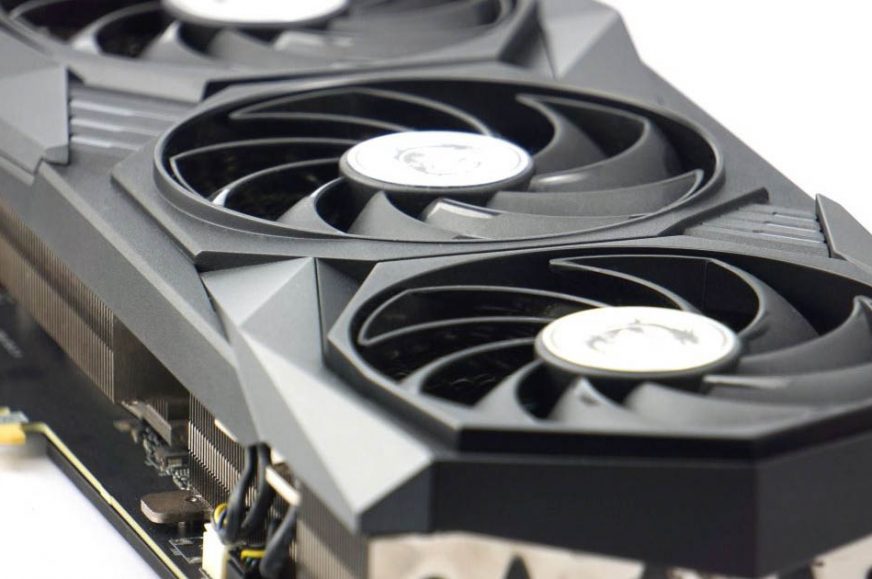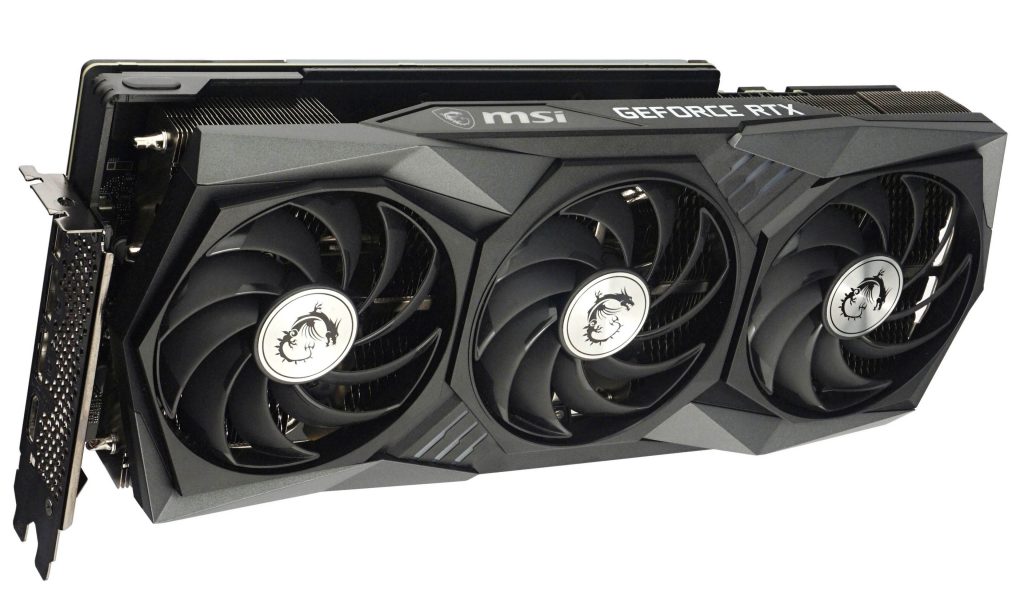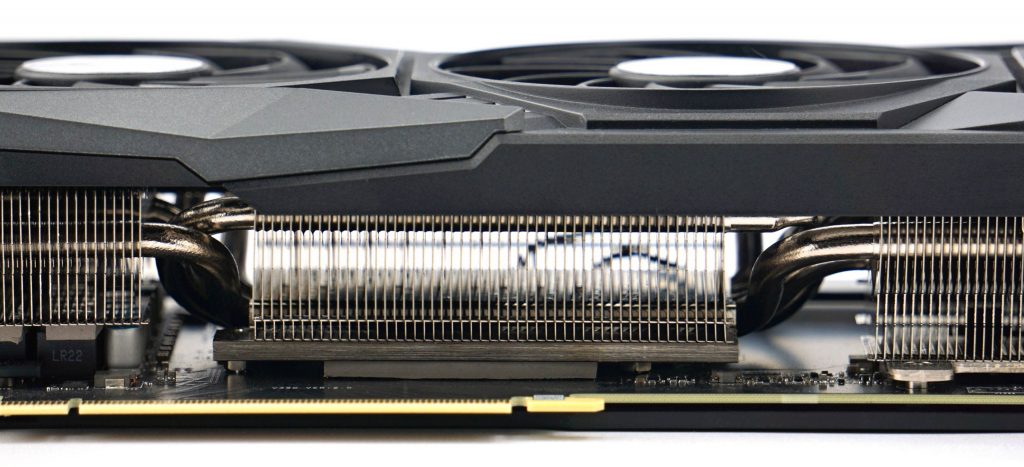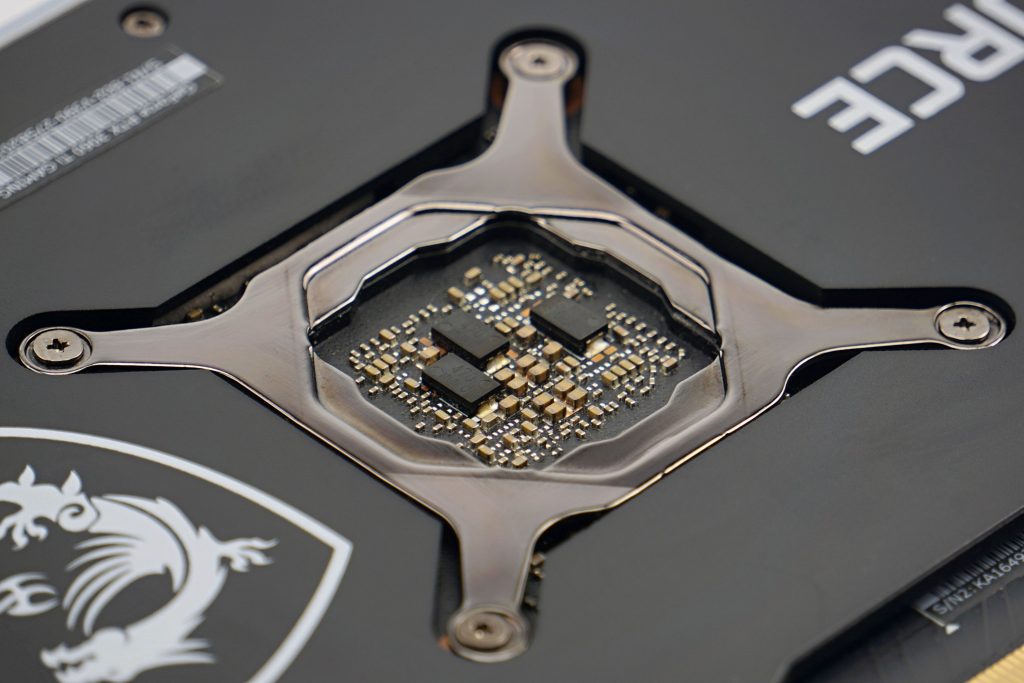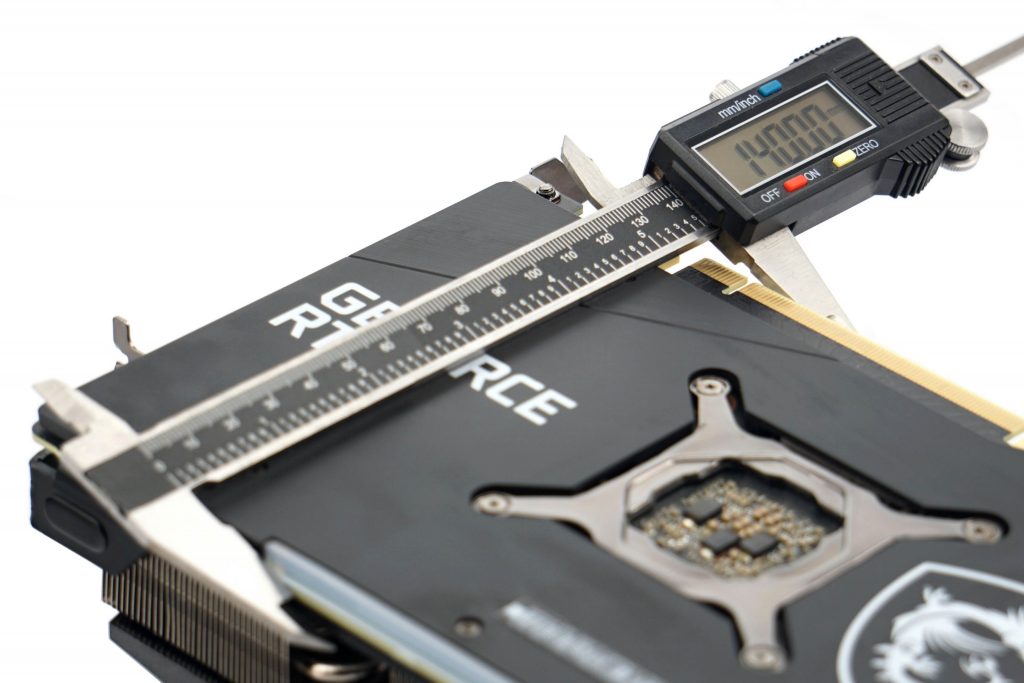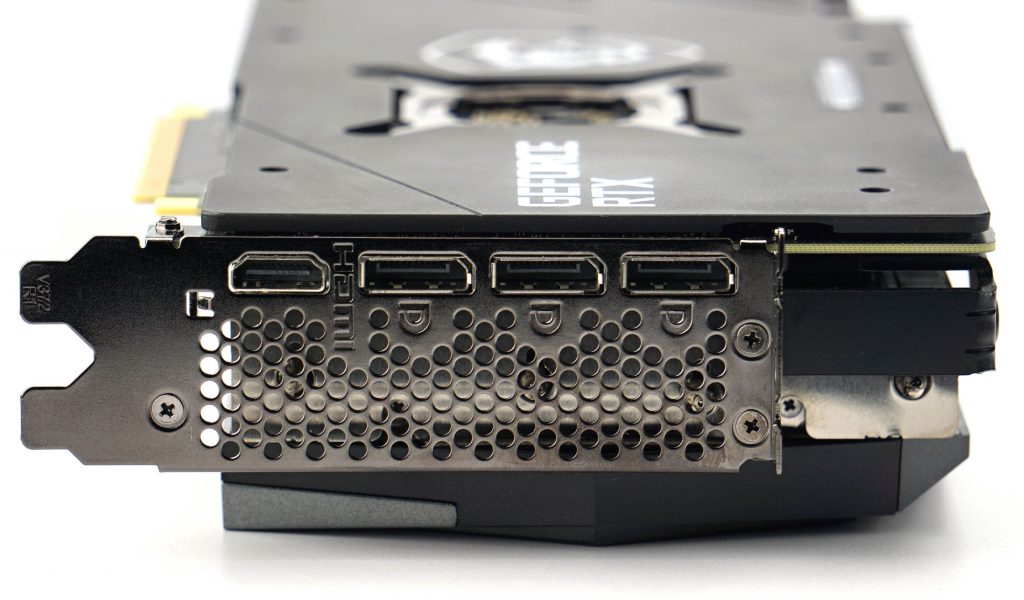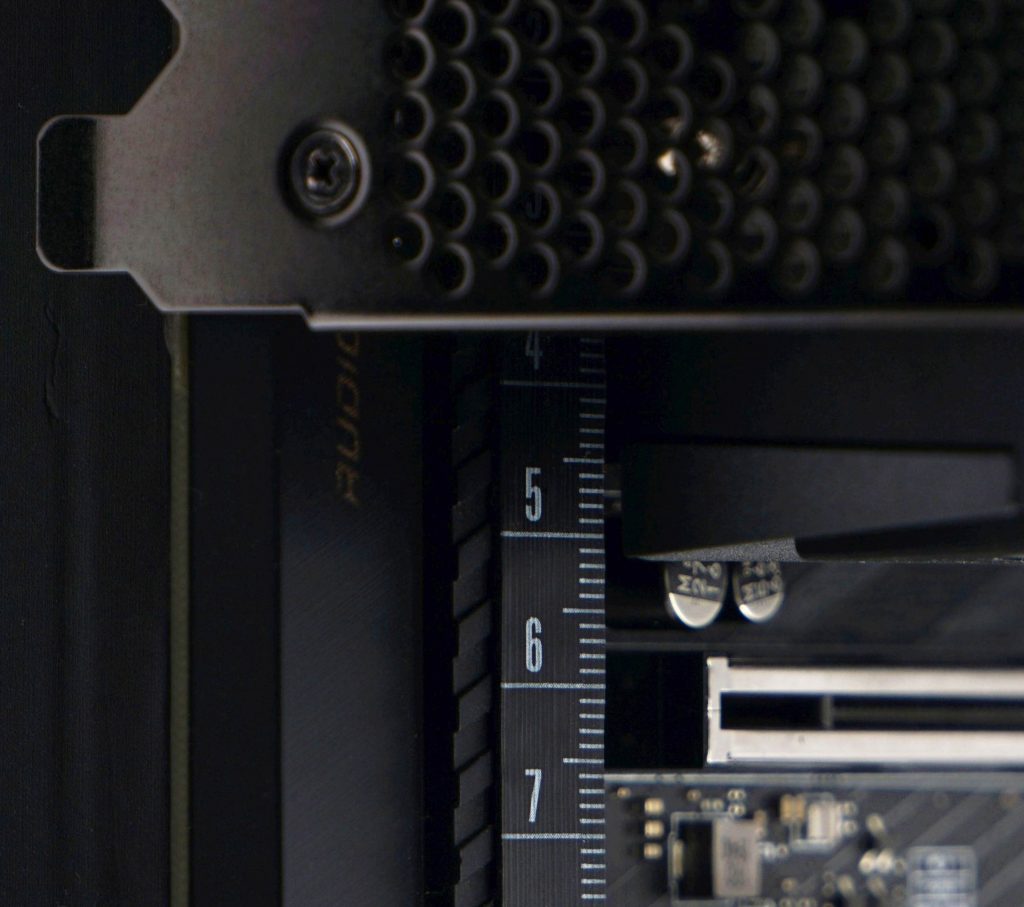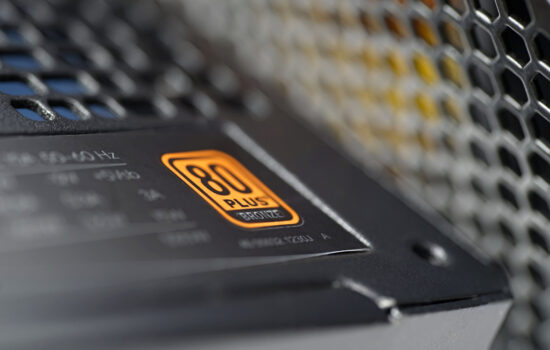MSI RTX 3060 Ti Gaming X Trio – Details
You are probably already looking forward to the announced tests of the RX 6700 XT, but first let’s look at the results of the RTX 3060 Ti. We managed to add this graphics card to our database right before the new Radeon at the last minute and it is important for a full review of the RX 6700 XT. But now we’re going to see a sisterly duel of the RTX 3060 Ti and RTX 3070. These graphics cards are close in terms of performance and price.
GeForce RTX 3060 Ti was released a month after the RTX 3070 as the second graphics card with the GA104 GPU, meaning they have the same core, only the RTX 3060 Ti has it a little weaker. Instead of 46 SM blocks, 38 are active. Proportionately, there are fewer shaders (4864), render output units (80), texturing mapping (152) and other units, an overview of which is offered in the detailed table in the second chapter of this article. The memory bus is still 256-bit and 14 GHz GDDR6 memory is also used.
MSI Gaming X Trio is the card variant, i.e. the same as we tested the RTX 3070. The mutual comparison will therefore be all the more attractive, as their design is very similar and the biggest difference is in the GPU used. The suggested price of the RTX 3060 Ti Gaming X Trio for the Czech and Slovak markets is 725 euros, which is 40 euros less than for the RTX 3070 Gaming X trio. MSI used a smaller difference in pricing than the hundred-dollar difference in the recommended prices of Nvidia.
MSI RTX 3060 Ti Gaming X Trio – Details
You are already familiar with this non-reference version from previous tests of MSI Gaming X Trio graphics cards (3070 and 3090). At first glance, only a few people would notice the use of old RTX 3070 Gaming Trio X photos. The identical Tri Frozr 2 cooler with three Torx 4.0 fans is used. We know that these have a rotor diameter of 90 mm and the ends of the blades are joined in pairs at their tips. This, in combination with other elements (for example, the corrugated edges of the radiator fins) is intended to contribute to better efficiency or to improve the ratio of the cooling performance to the noise level produced.
The radiator is composed of three bundles of aluminum fins, which are connected by six heatpipes. This is exactly the same as the RTX 3070, a little different are only the RTX 3080 and RTX 3090 Gaming X Trio. They have larger PCBs and different/bulkier power supply, to which the radiator is also slightly adapted.
The heatsink is not divided into three segments, but only into two, which in practice means that the distances between the segments (on the RTX 3060 Ti/3070) are filled with fins and thus a larger area is achieved, which is not vital for the RTX 3060 Ti. But we’re really talking about cosmetic differences, with 1,450 g (3.2 lb), this card is only 130 g (0.28 lb) lighter than the RTX 3090 Gaming X Trio, and some of that is made up of a longer PCB with mounted components. Compared to the RTX 3070 Gaming X Trio, the difference in weight is less than 10 g so there will be some differences in the equipment, and one of them includes a different composition of SMD (and large capacitors) in the enclosure behind the GPU, where the design of the RTX 3060 Ti Gaming X Trio is a bit less spacious.
The backplate is the same and is also adapted for shorter PCBs. Although together with the radiator it exceeds the PCB, this rear part is significantly perforated for better cooling and air flow through the radiator. The backplate is made of aluminum, but its surface probably is not anodized, but rather sprayed and responds worse to traditional alcohol-based cleaners. It is quite difficult to clean it with isopropyl nicely, without smudges. However, it is more important to note that the backplate area is also used for cooling purposes and thermal pads are used in the area behind the VRAM and VRM.
It is already more than obvious that the cooling will be as powerful and quiet at the same time as it was on the RTX 3070 Gaming X Trio. MSI states the same 240 W power consumption for both cards and also 1830 MHz boost GPU clock. However, these are just paper values that may differ, which we analyze in detail. Now, I rather want to point out that above-standard efficient cooling also has above-standard space requirements.
The RTX 3060 Ti has a length of 323 mm and, especially in the direction of the side panel, significantly exceeds the PCIe blanking plate tongue. This means that it can collide with the PC case construction in atypical, narrower or lower cases. But this will not be a problem for the most part, which MSI also relies on, and this cooler is being promoted on a large scale, but be careful. For example, you will not fit this graphics card inside the Chieftec UK-02B-OP. And there are more such smaller PC cases, which have a vertically divided interior into two chambers, with the fact that the main chamber with a depth of 140 mm simply does not count with such wide graphics cards.
The number and selection of video outputs is standard. There are four (all of which you can use at the same time) with a predominance of three DisplayPorts (1.4a) to one HDMI (2.1).
The graphics card is 56 mm high. Our gauge, where it extends up to 52 mm, does not take into account the protrusion above the slot (i.e. the thickness of the backplate and its gap between the PCB). Of course, this dimension (from the slot downwards) is more important for compatibility with expansion cards, but in the end it doesn’t matter. Either way, you won’t fit another card into the third slot, although the RTX 3060 Ti Gaming X is classified as a 2.7-slot graphics card.
And, as is customary with MSI, this time the card comes with a PCI Express bracket that you can use with the large and heavy cooler. This is simply because it sets the graphics card horizontally, which looks more attractive than a saggy back. The pressure on the slot will not be so enormous, although in the event of transport, where the forces of impacts multiply, it may already make sense from a safety point of view.
- Contents
- MSI RTX 3060 Ti Gaming X Trio – Details
- Specs table
- Methodology: performance tests
- Methodology: how we measure power draw
- Methodology: noise and sound measurement
- Methodology: temperature tests
- Test rig
- 3DMark
- Age of Empires II: DE
- Assassin’s Creed: Valhalla
- Battlefield V
- Battlefield V with DXR
- Borderlands 3
- Control
- Control with DXR and DLSS
- Counter-Strike: GO
- Cyberpunk 2077
- Cyberpunk 2077 with DLSS and FidelityFX CAS
- Cyberpunk 2077 with DXR, DLSS and FidelityFX CAS
- DOOM Eternal
- F1 2020
- FIFA 21
- Forza Horizon 4
- Mafia: DE
- Metro Exodus
- Metro Exodus with DXR and DLSS
- Microsoft Flight Simulator
- Red Dead Redemption 2 (Vulkan)
- Red Dead Redemption 2 (Dx12)
- Shadow of the Tomb Raider
- Shadow of the Tomb Raider with DXR
- Total War Saga: Troy
- Wasteland 3
- Overall game performance and performance per euro
- CompuBench (OpenCL)
- CompuBench (CUDA)
- SPECviewperf 2020 and SPECworkstation 3
- FLOPS, IOPS and memory speed tests
- 3D rendering 1/2 (LuxMark and Blender@Cycles)
- 3D rendering 2/2 (Blender@Radeon ProRender and Eevee)
- Photo editing (Adobe Photoshop, Lightroom and Affinity Photo)
- Broadcasting (OBS and Xsplit)
- Password cracking
- GPU clock speed
- GPU and VRAM temperatures
- Net graphics power draw and performance per watt
- Analysis of 12 V subcircuit power supply (higher load)
- Analysis of 12 V subcircuit power supply (lower load)
- Analysis of 3.3 V subcircuit power supply
- Noise level
- Frequency response of sound
- Conclusion





